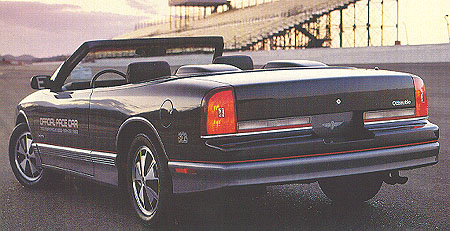In light of recent industry developments, this article is again timely - the tide was about to turn for GM - or was it? FWIW, I worked on the GM-10/W-car prototype/pilot program at various times between 1985 and 1988...
![Image]()
Modified by Jouko Haapanen at 9:31 PM 6-8-2005

| Quote, originally posted by Ward's Automotive » |
"What's new?' is a popular punch line at General Motors Corp. these days. So Lloyd E. Reuss just grins at the question as he strolls past carefully organized brown paper bags filled with documents stacked next to his secretary's desk. He's about to move from the sprawling GM Technical Center in Warren, MI, to GM's midtown-Detroit headquarters as a newly named executive vice president. Gesturing at the sacks, he allows that he traditionally throws away as much paper as practical when he's promoted. His reasoning: Those who've written all that stuff keep copies of the truly important documents. At 49, Mr. Reuss is a prime candidate to become GM's next president (see story p.64). But on this mid-February day, he's getting ready to vacate the office where he spent two years heading GM's huge Chevrolet-Pontiac-Canada Group, which, along with other awesome responsibilities such as launching the all-new Saturn car and franchise network by 1989, is charged with the biggest new-car program in automotive history: GM10, the front-drive, midsize W-body platform on which GM plans ultimately to build some 2-million cars a year in North America. GM10 models will replace two current lines offered by all divisions except Cadillac --the aging, 1978-vintage, rear-drive G-body specialty coupes and the newer (introduced in 1982), front-drive, A-body family sedans (maybe their station-wagon version as well) (see table p.56). And the W-cars will enter an increasingly competitive up-scale market where 30% of all North American cars now are sold and where GM long has reigned supreme. Contrary to widespread speculation among analysts, competitors and others, GM sources insist that GM10 has not been scaled down, nor will it be, and that GM's budget for the project still stands at a hefty $7 billion. In the same breath, however, they underscore that phase-in plans may be stretched out further than originally envisioned. As the new chief of GM North American Passenger Car Operations, Mr. Reuss now commands both CPC and the Buick-Oldsmobile-Cadillac Group, which will share GM10 output. And whatever else may end up in Mr. Reuss's paper shredder, the nuts and bolts of the massive GM10 project are keepers. Scheduled for introduction over the 1988-'90 period, GM10 remains very much a big part of Mr. Reuss's domain, even though he's now one rung higher on the corporate ladder. Besides its sheer size, GM10 is a dramatic undertaking for many other reasons: GM Chairman Roger Bonham Smith has shaken his huge empire with massive reorganizations, stunning acquisitions and dazzling diversification moves, but his final grade may well hinge upon how GM10 performs in the marketplace. He reaches retirement age (65) on July 12, 1990, the year GM10 moves into high gear. GM10 will be the first large-scale new-product program undertaken by CPC, one that naturally involves BOC deeply as a key component supplier as well as marketer of the finished cars. CPC and BOC were formed as "supergroups' two years ago to streamline GM's bureaucracy and wring out new efficiencies. But glitches remain. "Creating the new groups was obviously a job that wasn't going to happen overnight --and it hasn't,' Mr. Smith admits during a February speech in Chicago. "The easy things were done early--moving around the boxes on the organization chart. Now comes the slow, grinding process of changing GM's systems and corporate style, and that's where the big savings potentially are.' GM10 clearly stands as a crucial test of Mr. Smith's supergroup strategy. GM's historical dominance in--and reliance upon--midsize, high-profit cars is being challenged as never before. Shark fins multiply in waters where GM once swam by minnows with impunity, as midsize, midprice contenders at home and abroad-- especially new entries from the ever-aggressive Japanese--bare their teeth to feed on the broad $10,000-$20,000 segment where GM has dined so successfully for its bottom-line sustenance. GM10 also becomes the focal point for new ways of doing just about everything, each potentially fraught with problems. Besides employing new manufacturing and assembly techniques that promise to make even its newest facilities a trifle dated--but also can lead to quality and other snafus--GM through the W-car project intends to use its potent leverage to gain manning and work-rule changes from the United Auto Workers union, just as it has done at other plants and as its competitors are doing. Indeed, some worker resisistance already is surfacing, although GM10 becomes a huge proving ground for new ways of doing business with suppliers. Those who measure up to stringent quality and productivity targets got into the program early and stand to benefit mightily from the big volume stretched over perhaps eight to 10 years. Others fall by the wayside, failing to meet GM's tough bogies. |
Modified by Jouko Haapanen at 9:31 PM 6-8-2005









